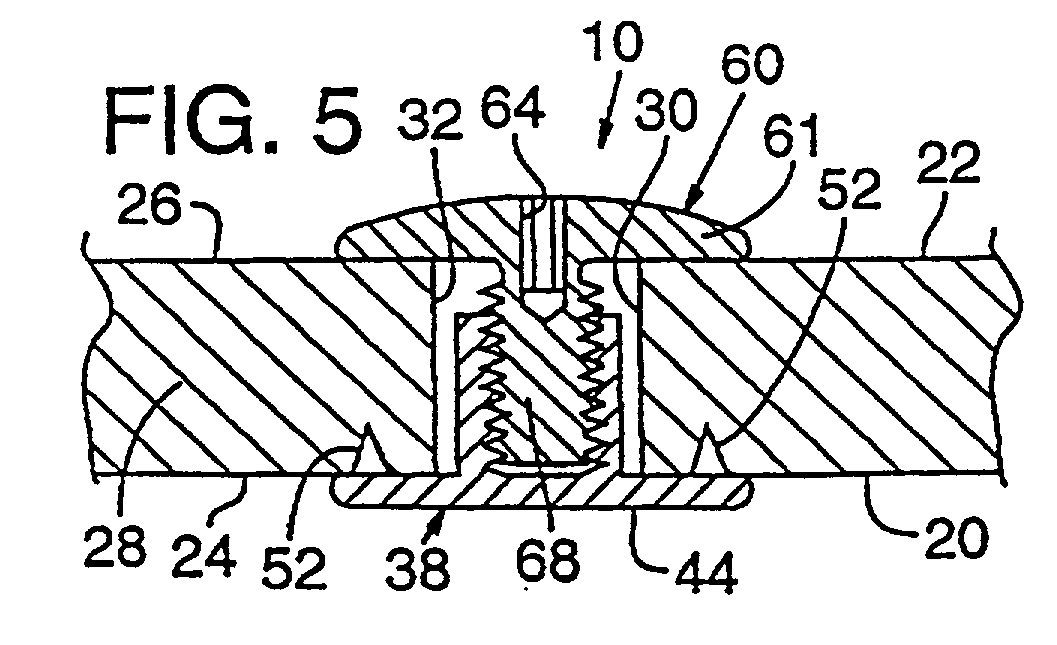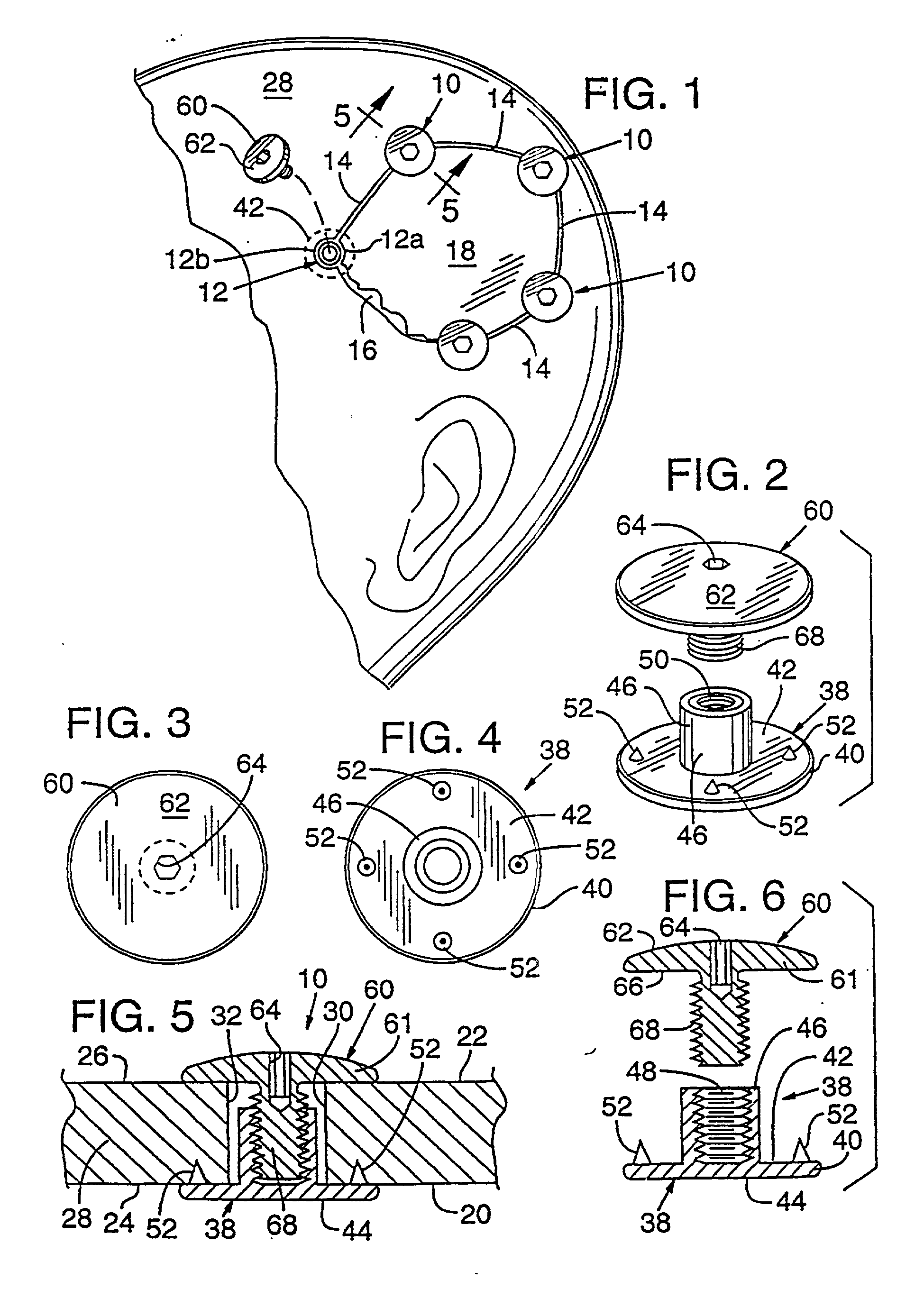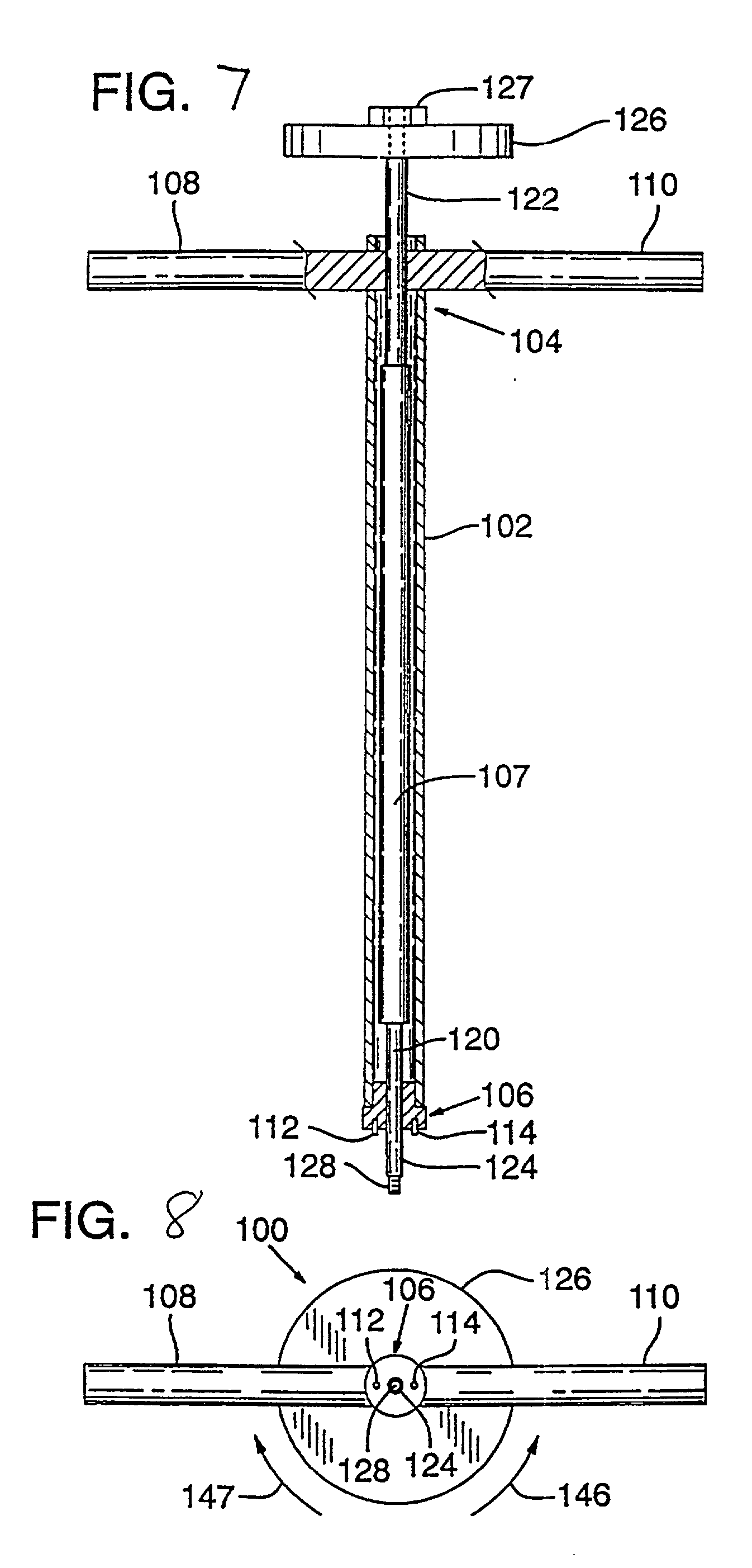Bone fastener and instrument for insertion thereof
a bone fastener and bone technology, applied in the field of bone fasteners, can solve the problems of time-consuming and potentially dangerous drilling of holes, unstable sutures, and prone to breakage, and achieve the effects of reducing the risk of fracture, and reducing the safety of cranial plate insertion
- Summary
- Abstract
- Description
- Claims
- Application Information
AI Technical Summary
Benefits of technology
Problems solved by technology
Method used
Image
Examples
Embodiment Construction
[0052] The present invention includes fasteners for securing two table-like or curved plate structures to each other. The invention also includes a positioning instrument that is particularly useful for positioning the fasteners in a surgical wound, and a fastening instrument for securing the fasteners to each other. This detailed description will describe several embodiments of the fasteners, as well as an instrument that can engage the fasteners to each other. The instrument can be used to secure many different types of fasteners to each other, but is shown in connection with the neurosurgical fasteners for purposes of illustration.
[0053] A clamp 10 is shown in the drawings for closing a craniotomy (FIG. 1), which is a particular type of table-like structure. As is known in the art, a craniotomy is performed by incising pericranium and muscle with cutting diathermy in the line of an intended bone flap. An incision is not made interiorly where a pedicle of pericranium or temporalis...
PUM
 Login to View More
Login to View More Abstract
Description
Claims
Application Information
 Login to View More
Login to View More - R&D
- Intellectual Property
- Life Sciences
- Materials
- Tech Scout
- Unparalleled Data Quality
- Higher Quality Content
- 60% Fewer Hallucinations
Browse by: Latest US Patents, China's latest patents, Technical Efficacy Thesaurus, Application Domain, Technology Topic, Popular Technical Reports.
© 2025 PatSnap. All rights reserved.Legal|Privacy policy|Modern Slavery Act Transparency Statement|Sitemap|About US| Contact US: help@patsnap.com



